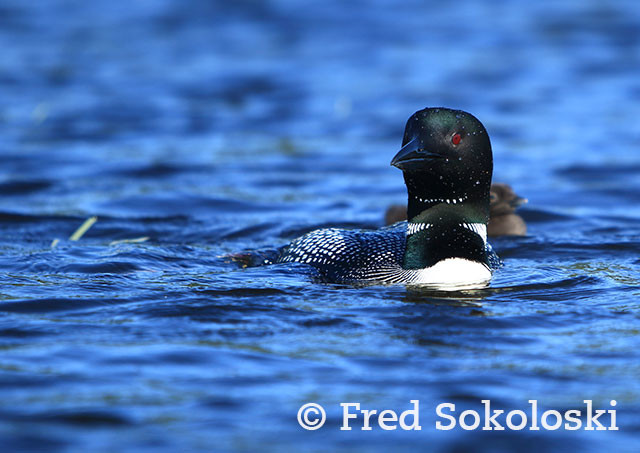
“Have you heard the loons yet?” This was a question that I had been asked by so many people after moving to New Hampshire. I thought maybe it was just coincidence, or a topic of small talk familiar among the northerners in the spring. It wasn’t until I experienced the Common Loon for the first time, that I was able to understand why so many are inspired by the charm of the common loon.
Many people can remember their first experience hearing or seeing a loon. During “Loon Magic”, a program that I put on here in the park, visitors get a chance to share their stories and tell about their first time that they had experienced a loon. For those who can recall, their eyes light up as they travel back in time recalling that special moment.
“No one who has ever heard the diver’s music-the mournful far-carrying call notes and the uninhibited, cacophonous, crazy laughter—can ever forget it”
-Oliver Austin, 1961
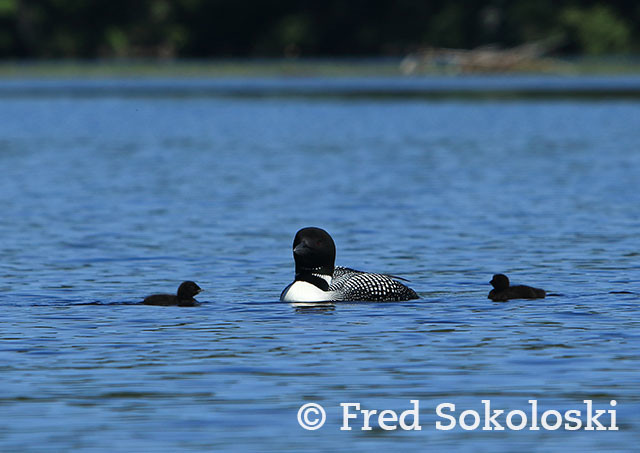
During my first night stay at Umbagog Lake State Park, I had my first experience hearing the calls of the Common Loon. After settling in to my quarters here at the park, I was relaxing on my front porch, which sits within a few hundred feet of the shores of the lake. It was a calm night—no breeze, bright stars, and only a few campers had occupied the campground. Around 9:30pm the Loons began their calls. I relaxed on my porch staring into the darkness, listening to the calls for quite a bit of time.
The Loon is a very unique and fascinating animal, one that many hold close to their hearts. People are charmed by the sight, sound, and simple presence of the Common Loon during the summer season in the northern states.
“If perchance you have never had the good fortune to hear the mournful cry of the common loon, you have missed the full enjoyment of the wilderness. Like the howl of a timber wolf, the bugling of a bull elk and the singing of a humpback whale, the mournful cry of the loon is unique.”
-George Harrison, 1983
After spending a long winter on the coast, Loons arrive to the northern lakes in spring just after the ice thaws. The Loon and its partner find a safe place to mate and build a nest close to the water. Once the pair has established a territory, they will lay 2-3 eggs and defend this territory throughout the summer. If they can protect their nest well, the young chicks begin to hatch in late July.
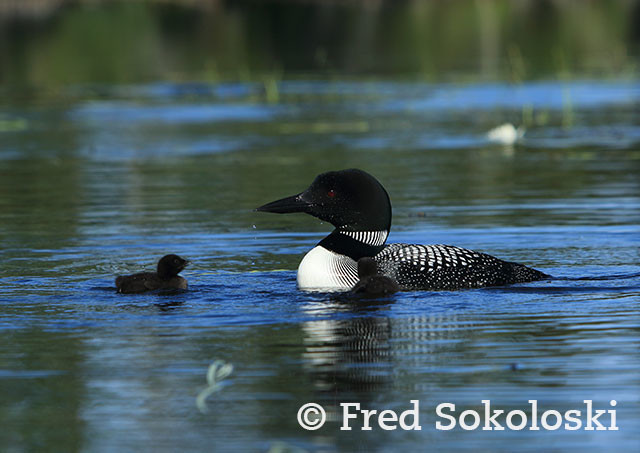
This is a very exciting time for Loon fanatics. Campers frequently return after a day on the lake with exciting stories about the newly born baby Loons that they have seen swimming around the big lake as a family.
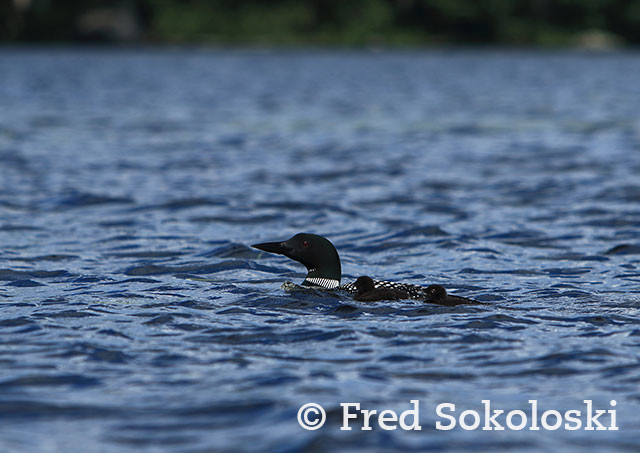
Whether swimming on the lake or hitching a ride, the chicks will spend most of their time accompanied by a parent Loon. Since they are not strong enough to hunt on their own, the parents will collect small aquatic life and bring it up to the surface to feed the chicks.
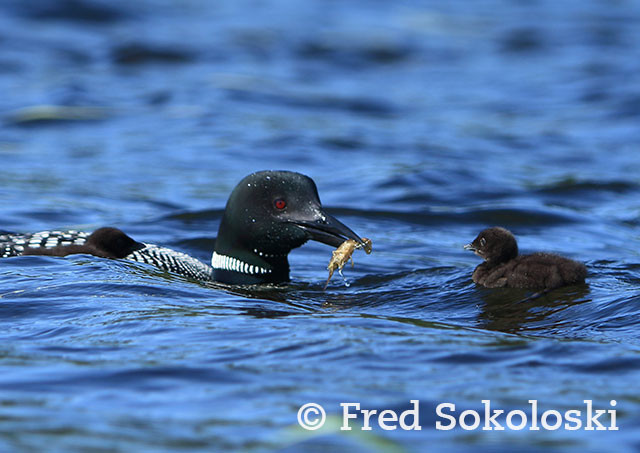
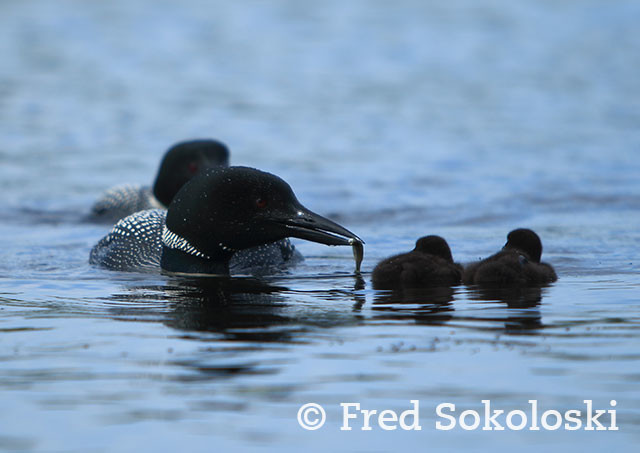
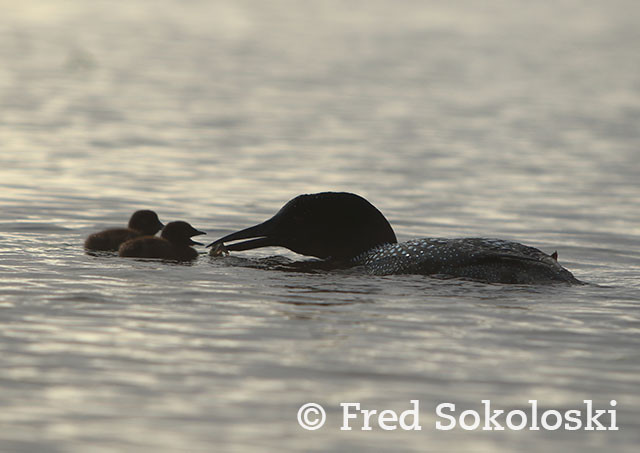
When the mature Loon needs a break, or needs to leave their territory to fish on their own, they will try to find a good hiding spot for the chicks until they return; commonly among the tall grasses near the nests. This is not, however, a guaranteed means for safety. Filled with curiosity, this little Loon had wiggled its way out of the grasses to roam the lakes without the parents around to protect it. Fortunately for this little one, its parents had returned in time before another predator could have a chance to feast.
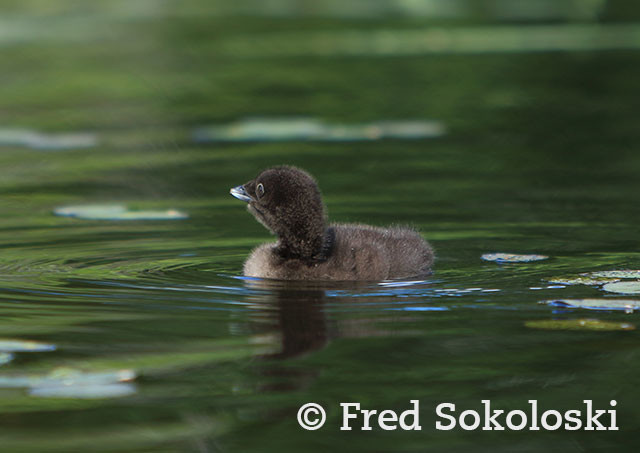
While this is an exciting time of year for those who are passionate about the Loons, it is also a very sensitive time of year for the species. Loons have spent the last 30-40 days incubating and protecting their territory. With the chicks now out and about, they must face new challenges: predators. The bald eagle has been an increasing threat to the Loon population on the lake. Since the eagle population has be growing stronger over the years, this threat becomes an even larger challenge for the Loons.
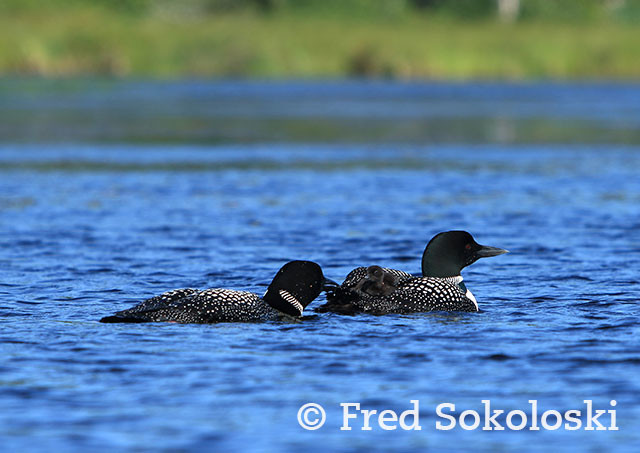
The Umbagog Lake Wildlife Refuge studies the Loons on the lake very closely. In 2015, there have been 12 known nest attempts on the lake. Over half of these nests have failed for one reason or another. There have been however 10 successful hatches that have been accounted for on the lake, produced from 5 different nests. Researchers from the refuge have been watching closely, expecting eggs from a final nest to hatch any day.
A huge thanks to Fred Sokoloski for sharing these incredible shots of the loons here on the lake. Fred spends more time on the lake than most, observing the wildlife and taking incredible photo’s. We are grateful for his generosity in sharing these photo’s from the last few weeks so that all can enjoy and learn about these beautiful species.

Beautiful pictures. The mature loons are truly a work of art and the babies are so cute. Thank you, Mr. Sokoloski.